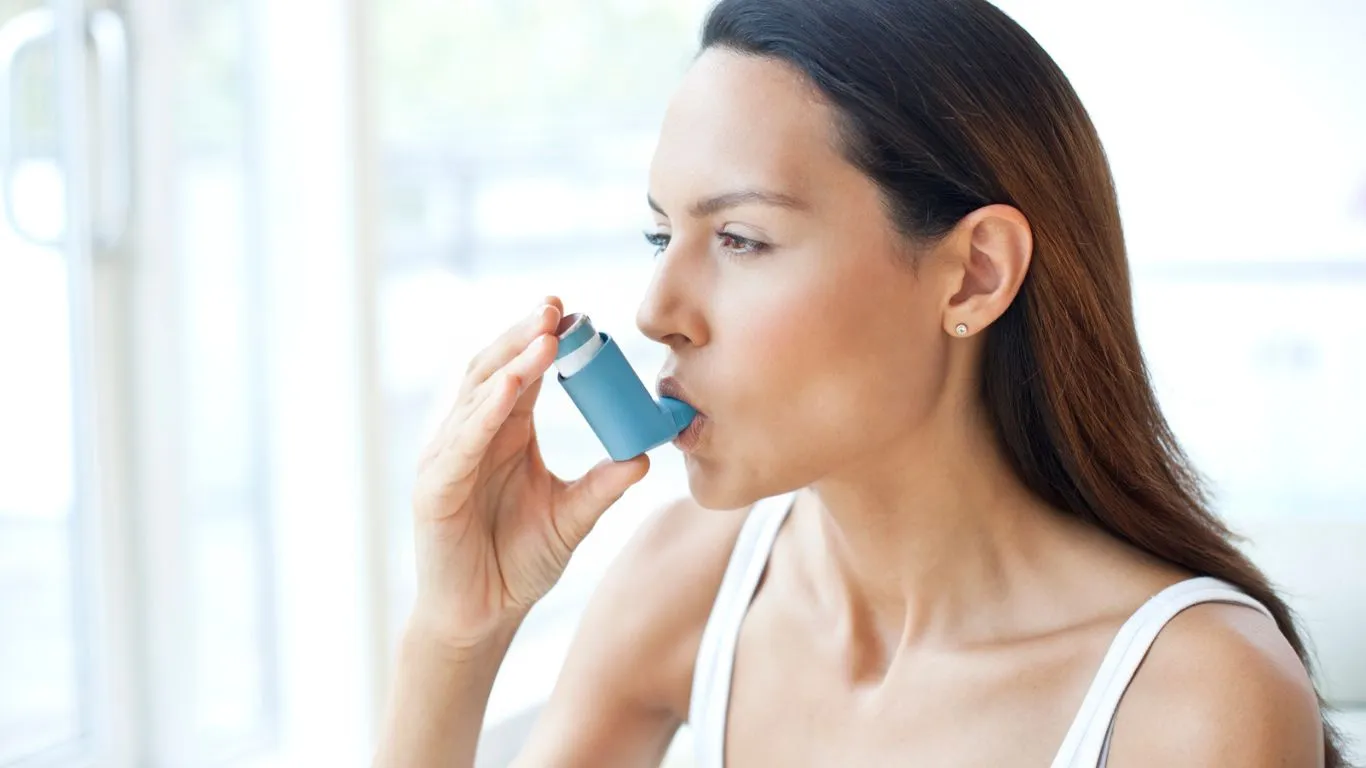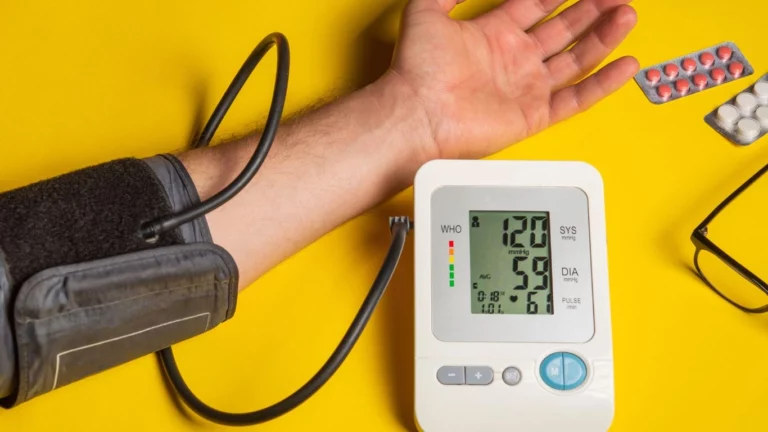Best Ways to Relieve Asthma During Exercise & Breathe Easier Today
Let’s be real—exercising with asthma can feel like trying to run a marathon with a brick on your chest. But here’s the thing: you don’t have to let asthma stop you from moving, sweating, and feeling amazing. The best ways to relieve asthma during exercise aren’t just about popping an inhaler before you start. It’s about knowing your body, preparing smart, and making small adjustments that add up to a smoother, breath-friendly workout.
Understanding Exercise-Induced Asthma (EIA)

If you’ve ever started a workout, only to find yourself gasping for air within minutes, you’re not alone. Many people with asthma experience exercise-induced bronchoconstriction (EIB), often called exercise-induced asthma (EIA). It happens when the airways tighten up in response to physical exertion, leaving you wheezing, coughing, and struggling to catch your breath.
From my own experience, I used to avoid running altogether because I was convinced it would always end in a full-blown asthma attack. Turns out, I was just missing some key strategies to help my lungs keep up.
Why Does Exercise Trigger Asthma Symptoms?
It’s all about the air you’re breathing. When you exercise, you tend to breathe faster and through your mouth. This means the air isn’t properly warmed or humidified before it hits your lungs, which can trigger airway inflammation and tightening. Cold air, dry air, and allergens in the environment can make it even worse.
Signs You Might Have Exercise-Induced Asthma
If you’re wondering whether your shortness of breath is just from being out of shape or something more serious, here are some telltale signs:
- Wheezing or a whistling sound when breathing
- Shortness of breath that feels out of proportion to your effort
- Tightness or pressure in the chest
- Persistent coughing during or after exercise
- Fatigue that sets in way too early in your workout
If this sounds familiar, don’t worry—you’re not doomed to a life of avoiding workouts. With the right approach, you can exercise safely and confidently.
Best Ways to Relieve Asthma During Exercise

Managing asthma while exercising isn’t just about reacting when symptoms start—it’s about preventing them in the first place. Here are some of the best ways to keep your airways happy:
1. Warm Up (Like, Really Warm Up)
Jumping straight into intense exercise is a sure way to trigger asthma symptoms. A proper warm-up gradually increases your heart rate and allows your lungs to adjust. I personally swear by starting with:
- 5-10 minutes of light cardio (walking, slow cycling)
- Dynamic stretches to loosen up the muscles
- Breathing exercises to control airflow
It’s a game-changer! My workouts feel so much smoother when I give my lungs that adjustment period.
2. Breathe Through Your Nose
Mouth breathing = dry, cold air hitting your lungs like a shockwave. Nose breathing, on the other hand, helps warm and humidify the air before it reaches your airways. If you struggle with this, practice controlled breathing techniques during low-intensity workouts.
3. Choose the Right Type of Exercise
Some workouts are just easier on the lungs. If high-intensity running or HIIT classes leave you gasping, try these asthma-friendly alternatives:
- Swimming: The warm, humid air in pools is great for preventing airway irritation.
- Yoga: Focuses on breath control and can improve lung function.
- Walking or Hiking: Great for steady-state cardio without sudden intensity spikes.
- Cycling: As long as you control your pace, cycling can be asthma-friendly.
Personally, I found that switching from running to swimming made a huge difference in my endurance. Less wheezing, more energy—it was a total win.

Next, let’s dive into some of the best techniques to prevent asthma attacks during workouts and how to recover quickly if symptoms strike mid-exercise.
How to Prevent Asthma Attacks During Workouts

We’ve covered the basics—warming up, breathing correctly, and choosing the right exercises—but what if you’re still struggling? Trust me, I’ve been there. Even with all the right precautions, I used to find myself gasping for air mid-run, wondering what I did wrong.
The trick? Prevention isn’t just one thing—it’s a combination of small, intentional habits that work together to keep your airways open. Let’s break it down.
1. Use Your Inhaler (At the Right Time!)
If you have a prescribed rescue inhaler (like albuterol), don’t wait until you’re already struggling to breathe. Instead, take two puffs about 15-30 minutes before exercise. This gives your lungs a head start, reducing the likelihood of symptoms.
For me, remembering to use my inhaler before a workout was a game-changer. Once I made it part of my routine, I noticed fewer flare-ups and could push myself harder without fear.
2. Avoid Triggers That Set You Off
Asthma triggers are sneaky. Sometimes, it’s not the workout itself but what’s in the air that makes things worse. Here’s what to watch out for:
- Cold air: If it’s chilly outside, wear a scarf or mask over your nose and mouth.
- Pollen and allergens: Check the air quality before heading out—if pollen levels are high, exercise indoors.
- Dry air: Consider using a humidifier in your workout space.
- Strong smells: Perfumes, cleaning sprays, and even chlorine in pools can be irritating.
Personally, I avoid outdoor runs in peak allergy season because I know my lungs will hate me for it. Instead, I opt for an indoor treadmill session or a strength workout.
3. Don’t Push Through Symptoms
We get it—nobody likes stopping mid-workout. But if you start wheezing, coughing, or feeling tightness in your chest, don’t try to “push through it.” That’s a fast track to a full-blown asthma attack.
Instead:
- Pause and focus on slow, deep breaths.
- Use your inhaler if needed.
- Switch to low-intensity movement until your breathing stabilizes.
It’s frustrating, I know. But learning when to pause actually helps you build endurance in the long run because you’re working with your lungs, not against them.
Recovering Quickly from an Asthma Flare-Up

Even with the best prevention strategies, asthma can still surprise you. One minute you’re feeling great, the next—your chest is tight, and breathing feels like a struggle.
So what do you do?
1. Stop and Focus on Controlled Breathing
Instead of panicking (which makes breathing even harder), try the pursed-lip breathing technique:
- Inhale deeply through your nose for 2 seconds.
- Exhale slowly through pursed lips for 4 seconds.
- Repeat until your breathing feels more controlled.
This method helps open your airways and makes each breath more effective. It’s my go-to trick when I feel symptoms creeping up.
2. Use Your Rescue Inhaler
If symptoms don’t improve within a couple of minutes, use your inhaler as prescribed. Usually, that means two puffs, with a short pause in between.
After using my inhaler, I like to sit upright and focus on slow, steady breaths to help my lungs recover.
3. Hydrate and Rest
Drinking water helps thin out mucus and keeps your airways from getting too dry. Also, don’t rush back into exercise—give yourself time to fully recover before deciding whether to continue.
There were times when I tried to jump back into my workout too soon, only to have symptoms return even worse. Lesson learned: respect your recovery time.
Now that we’ve tackled prevention and recovery, let’s explore how to build endurance safely and strengthen your lungs over time.
Case Studies & Real-Life Examples

When it comes to exercising with asthma, it’s one thing to read advice, but it’s another to see how real people make it work. Here are a few inspiring stories that prove asthma doesn’t have to hold you back.
Case Study 1: The Marathon Runner with Asthma
Meet Jake—a 34-year-old long-distance runner who once believed asthma would keep him from ever crossing a finish line. After experiencing multiple flare-ups during training, he worked with his doctor to refine his strategy.
His success formula?
- Using a bronchodilator 30 minutes before every run
- Training indoors on high-pollen days
- Gradually increasing running distances instead of pushing too hard too soon
Jake’s dedication paid off, and he completed his first full marathon without a single asthma flare-up. His biggest takeaway? Understanding your limits and working with your lungs—not against them—makes all the difference.
Case Study 2: The Gym Enthusiast Who Thought She Couldn’t Lift
Emma, a 27-year-old fitness coach, avoided strength training because she assumed heavy lifting would trigger her asthma. But after experimenting with different workout styles, she discovered that resistance training was actually easier on her lungs compared to high-intensity cardio.
Her strategy included:
- Prioritizing controlled breathing during lifts
- Taking longer rest periods between sets
- Keeping her inhaler nearby but rarely needing it
Now, she lifts five days a week and rarely experiences symptoms—proof that not all exercise affects asthma the same way.
Key Takeaways: What You Need to Remember
Managing asthma during exercise is totally possible—it just requires the right approach. Here’s what you should take away from everything we’ve covered:
- Always warm up before exercising and cool down afterward.
- Use your inhaler before a workout, not just when symptoms appear.
- Choose asthma-friendly exercises like swimming, yoga, or controlled resistance training.
- Pay attention to your triggers (cold air, allergens, pollution) and adjust your environment accordingly.
- Know when to stop and recover—pushing through symptoms can do more harm than good.
FAQs
1. Can I still do high-intensity workouts if I have asthma?
Yes, but you need to build up your endurance gradually. HIIT workouts and sprinting can be challenging, so start slow, listen to your body, and take longer rest periods.
2. Should I avoid exercising in cold weather?
Not necessarily! If cold air triggers your symptoms, try wearing a mask or scarf to warm the air before it enters your lungs. Indoor workouts are also a great alternative.
3. What’s the best way to track asthma symptoms during workouts?
Keep a simple workout journal. Note what exercises you did, how your breathing felt, and whether you needed your inhaler. Over time, you’ll notice patterns that can help you refine your routine.
Bonus: Additional Resources or DIY Tips
Want to take control of your asthma even further? Here are some additional resources and practical DIY tips:
- Invest in a peak flow meter to monitor lung function before and after workouts.
- Use a humidifier at home if dry air worsens your symptoms.
- Download an air quality app to avoid high-pollen or pollution days.
- Try breathing exercises like the Buteyko method to strengthen your lungs.
Appendix: Table, References, and Call to Action
Exercise & Asthma: Quick Comparison Table
| Exercise Type | Asthma-Friendly? | Why? |
|---|---|---|
| Swimming | ✔ Yes | Warm, humid air reduces airway irritation. |
| Yoga | ✔ Yes | Encourages breath control and relaxation. |
| Running (Cold Weather) | ✖ No | Cold, dry air can trigger bronchoconstriction. |
| HIIT Workouts | ⚠ With Caution | High intensity can trigger symptoms but may be manageable with pacing. |
References
- American Lung Association – Trusted information on lung health.
- AAAAI – Guidelines on asthma and exercise.
- NCBI – Research on asthma and physical activity.
Disclaimer
This article is for informational purposes only and does not replace professional medical advice. Always consult your doctor before making changes to your exercise routine, especially if you have asthma.
Call to Action
Have a personal asthma workout tip or success story? Drop a comment below! And if you found this guide helpful, share it with someone who needs a little motivation to get moving—asthma doesn’t have to hold you back! 🚀

Bianca Nala is a compassionate Nurse Practitioner with a strong background in primary and respiratory care. As a health writer for Healthusias.com, she combines her clinical expertise with a talent for clear, relatable storytelling to help readers better understand their health. Bianca focuses on topics like asthma, COPD, chronic cough, and overall lung health, aiming to simplify complex medical topics without losing accuracy. Whether she’s treating patients or writing articles, Bianca is driven by a single goal: making quality healthcare knowledge accessible to everyone.






